WEI Lab
Our long-term goal is to accelerate the elucidation of oral disease and regeneration mechanisms, advance intelligent biomaterial design and translational technologies, and develop full period, precise, and intelligent strategies for oral health.
Our team actively responds to the “Healthy China 2030” initiative, leveraging national research platforms and focusing on two core areas: oral disease diagnosis/treatment and in situ tooth regeneration. We are deeply engaged in disease mechanism analysis, innovative technology development, and intelligent biomimetic manufacturing. We have undertaken major national projects such as the National Key R&D Program and the National Natural Science Foundation of China, publishing over 60 high-impact papers in leading international journals and establishing a significant global academic presence. Our team has systematically built an integrated innovation framework covering “disease mechanisms – novel therapies – intelligent biomimetic materials,” leading to breakthroughs such as the development of cation migration-blocking analgesic techniques and multiscale hierarchical tooth construction. Clinical trials show these technologies and products have an efficacy rate over 99%, representing a leap in oral care technology. Currently, we have established a comprehensive innovation ecosystem spanning basic research, technology transfer, and clinical application. Our achievements have been recognized with several top national and provincial awards, including the First Prize of the Ministry of Education’s Science and Technology Progress Award, the First Prize of the Chinese Medical Science and Technology Award, and the First Prize of the Chinese Stomatological Science and Technology Award. These accomplishments are promoting the transformation of dentistry in China from traditional diagnostic and treatment models to precision and intelligent medicine, setting a benchmark for advancing national oral health and leading progress in the medical technology sector..
DIRECTOR
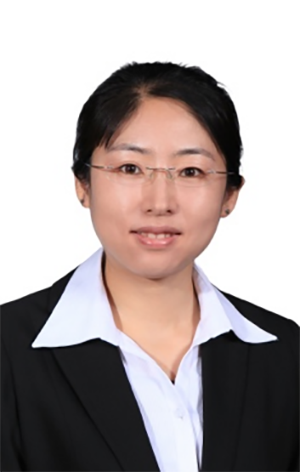
Yan Wei, DDS, PhD
Principal Investigator
kqweiyan@bjmu.edu.cn | +86-10-82195584
Dr Wei, professor and president of Peking University School and Hospital of Stomatology, executive deputy director of the Department of Biomedical Engineering of Peking University, director of the National Center of Stomatology, and academician of the Chinese Academy of Medical Sciences. She was awarded National Science Fund for Distinguished Young Scholars, the person in charge of the Creative Research Groups of the NSFC, and enjoys the special government allowance of the State Council. In recent years, She has presided over more than 30 national and provincial scientific research projects, and has published more than 250 papers in Science, Nature Materials and other internationally renowned journals, including more than 160 SCI papers, which have been cited more than 4500 times. She has obtained 67 authorized national invention patents and 4 international invention patents. The series of new dental and jaw restoration materials developed by her have obtained 4 Class III medical device registration certificates of the National Medical Products Administration, and have been promoted and applied in more than 10 million cases in more than 1500 medical institutions at home and abroad. He has won the National Innovation First Award, the title of National Outstanding Scientist, the first prize of the Ministry of Education for scientific and technological progress, the first prize of the Chinese Stomatological Association for science and technology, the first prize of the Huaxia Medical Science and Technology Award, the highest award of the National Subversive Technology Innovation Competition, and the Guanghua Engineering Science and Technology Award Youth Award.
RESEARCH AREAS
Oral Disease Mechanisms
We have established a multidimensional research framework and innovatively elucidated the mechanisms of dental pain, proposing new strategies for analgesic technology. For the first time, we discovered the cationic rectification effect in dentinal tubules, revealing a novel ionic pathway for pain transmission and overturning traditional concepts. Building on this, we invented a cation migration-blocking analgesic technique, which has achieved a 99% efficacy rate and prolonged pain relief by 20 times in clinical trials, marking a breakthrough in the field. Additionally, we identified new mechanisms underlying oral aging and clarified the regulatory role of the immune system. Based on these advances, we developed an end-to-end research model spanning molecular mechanisms to clinical interventions, and established an integrated “mechanism–technology–product” innovation framework with a multidimensional evaluation system. These achievements strongly advance stomatology toward precision, intelligence, and personalized care.
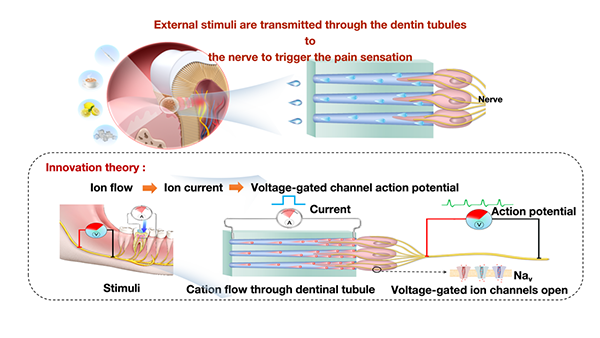
Restorative dentistry
We systematically investigate tooth regeneration through three main approaches. First, we elucidate biomolecular regulatory mechanisms in natural tooth development, focusing on molecular recognition, nanoscale nucleation, and hierarchical assembly to clarify the pathway from micro- to macro-structure. Second, we leverage materials genome technology and advanced algorithms to model, screen, and optimize materials that promote in situ regeneration, greatly improving efficiency and outcomes. Third, we develop multiscale construction techniques to precisely control tooth architecture, chemical gradients, and crystal orientation, achieving biomimetic replication and enhancing integration with native tissue. As an emerging technology, in situ tooth regeneration shifts oral rehabilitation from passive restoration to active growth and offers significant clinical potential.
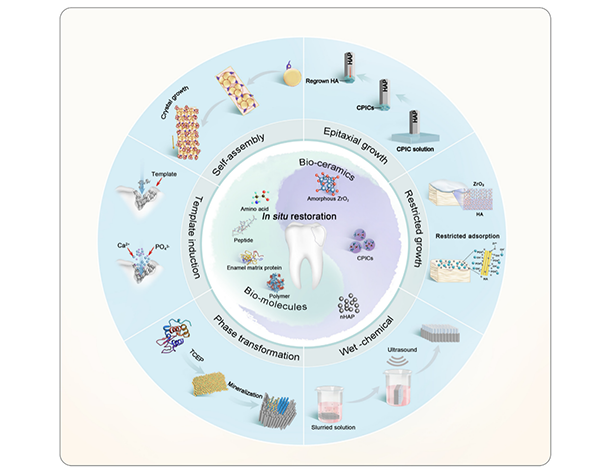
Artificial intelligence in oral medicine
We have established a multimodal, multiscale, and interdisciplinary simulation system, and innovatively developed new methodologies for oral biomaterials development and oral disease prediction. Specifically, by integrating molecular dynamics simulations, deep learning, and micro/nano-mechanical testing techniques, we have overcome the limitations of traditional experiments in capturing dynamic material–tissue interface responses and early-stage microscopic evolution of disease. Building on this foundation, we proposed a “data–model–experiment” co-driven intelligent R&D framework and constructed a comprehensive, multidimensional characterization system spanning atomic-level structure–function relationships to clinical phenotypes. This innovative framework enables us to unravel the mechanisms of oral biomaterial biocompatibility and the molecular dynamics underlying disease onset and progression, contributing systematic theoretical insights and technological breakthroughs for AI-driven oral health, and propelling stomatology toward precision and intelligent medicine.
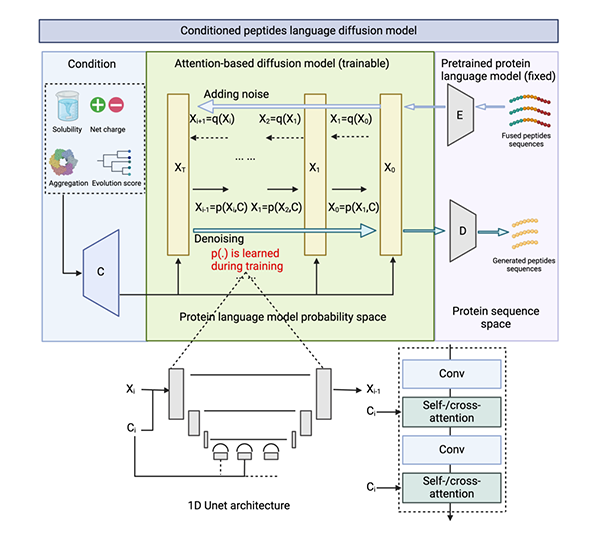
RECENT PUBLICATIONS
Multiscale Engineered Artificial Tooth Enamel
Science. 2022, 375, 551-556
Graphene oxide bulk material reinforced by heterophase platelets with multiscale interface crosslinking
Nature Materials. 2022, 21, 1121–1129
Chirality Bias Tissue Homeostasis by Manipulating Immunological Response
Advanced Materials. 2022, 34, 2105136
Injectable In Situ Induced Robust Hydrogel for Photothermal Therapy and Bone Fracture Repair
Advanced Functional Materials. 2021, 31, 2010779
An Amorphous Peri-Implant Ligament with Combined Osteointegration and Energy-Dissipation
Advanced Materials. 2021, 33, 2103727
Built-In Electric Fields Dramatically Induce Enhancement of Osseointegration
Advanced Functional materials. 2017, 27, 1703771
Ultra-Sensitive and Selective Electrochemical Bio-Fluid Biopsy for Oral Cancer Screening
Small Methods. 2021, 5, 2001205
Directing Stem Cell Differentiation via Electrochemical Reversible Switching between Nanotubes and Nanotips of Polypyrrole Array
ACS Nano. 2017, 11, 5915-5924
The Dynamic Counterbalance of RAC1-YAP/OB-Cadherin Coordinates Tissue Spreading with Stem Cell Fate Patterning
Advanced Science. 2021, 8, 2004000
Enamel Repair with Amorphous Ceramics
Advanced Materials. 2020, 32, 1907067
Ultra-Sensitive and Selective Electrochemical Bio-Fluid Biopsy for Oral Cancer Screening
Small Methods. 2021, 5, 2001205
Sequential Drug Release via Chemical Diffusion and Physical Barriers Enabled by Hollow Multishelled Structures
Nature Communication, 2020, 11, 4450
Diffusion Behaviors of Integrins in Single Cells Altered by Epithelial to Mesenchymal Transition
Small, 2022, 18, 2106498
Poly(ionic liquid)-Based Efficient and Robust Antiseptic Spray
ACS Applied Materials & Interfaces. 2021, 13, 48358-48364
Specific Recognition of Uranyl Ion Employing a Functionalized Nanochannel Platform for Dealing with Radioactive Contamination
ACS Applied Materials & Interfaces. 2020, 12, 3854-3861
Hydrogel-Coated Dental Device with Adhesion-Inhibiting and Colony-Suppressing Properties
ACS Applied Materials & Interfaces. 2020, 12, 9718-9725
Metallic Antibacterial Surface Treatments of Dental and Orthopedic Materials
Materials. 2020, 13, 4594
Ceramic Toughening Strategies for Biomedical Applications
Frontiers in Bioengineering and Biotechnology. 2022, 10, 840372
Regulating the Mechanical and Optical Properties of Polymer-based Nanocomposites by Sub-Nanowires
Angewandte Chemie International Edition, 2022, e202214571
Superwettable and Injectable GelMA-MSC Microspheres Promote Cartilage Repair in Temporomandibular Joints
Frontiers in Bioengineering and Biotechnology, DOI 10.3389/fbioe.2022.1026911
TEAM

Shengjie Jiang
Associate Researcher
kqjiangshengjie@bjmu.edu.cn
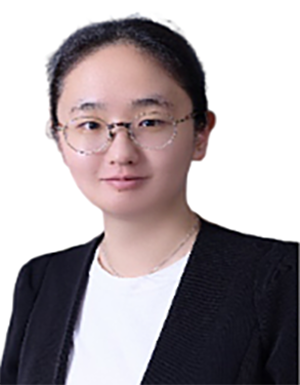
Yue Yang
Assistant Researcher
Yangyue200455@outlook.com

Jingjing Deng
Postdoctoral Researcher
kqdengjingjing@bjmu.edu.cn

Huimin Zheng
Doctoral Researcher
kqzhenghuimin@bjmu.edu.cn
CONTACT
Yan Wei
kqweiyan@bjmu.edu.cn
+86-10-82195584
Peking University School and Hospital of Stomatology,
No.22 Zhongguancun South Avenue,
Haidian District, Beijing 100081, PR China
last text: Dental Digital-Biomimetic Diagnosis and Therapy Innovation Team
next text: Hu Wenjie lab (Periodontology and Implantology Research Group)






